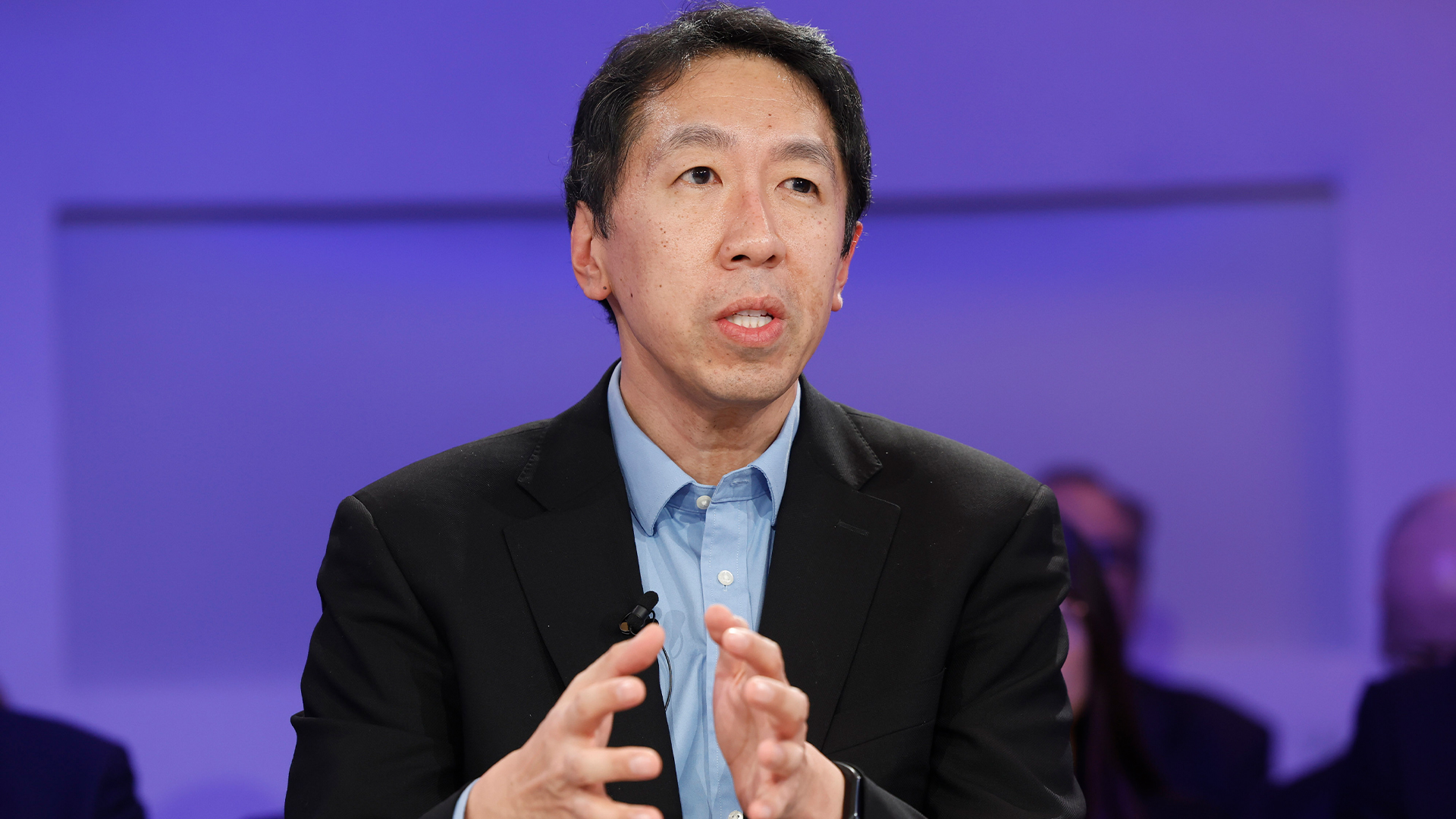‘It’s far from showing its age’: Java might’ve just turned 30, but it’s still going strong and here to stay
The popular programming language still has a lot of gas in the tank


Java, one of the world’s most popular programming languages, has officially turned 30 - but it’s still a long way from reaching its twilight years.
The programming language was first released in May 1995, and its launch came at a pivotal time in the development of the world wide web. The programming language was perfectly suited to cater for growing interactivity and multimedia requirements.
Java was created by James Gosling while working at Sun Microsystems, which was acquired by Oracle in 2010. Java development began some years before as part of a project - originally called ‘Oak’ - aimed at revolutionizing interactive television.
Ultimately, it proved slightly ahead of its time and the team behind the project pivoted to develop and fully flesh out the programming language. But with the rise of the web and more complex networking requirements, Gosling and co were wary of the potential pitfalls less portable languages could create in years ahead.
It was a solid call on their part. In an interview with ITPro way back in 2007, Gosling noted that “most of the stuff we talked about back then has happened, even though at the time it seemed like extreme science fiction”.
So what makes Java tick, and what’s the secret sauce behind its longevity?
Java’s timeless appeal
Java is a high-level, general purpose, object-oriented programming (OOP) language and was designed with a C/C++ style syntax that developers at the time would have found very familiar.
Sign up today and you will receive a free copy of our Future Focus 2025 report - the leading guidance on AI, cybersecurity and other IT challenges as per 700+ senior executives
The language itself is very reliable and known for its ease of use, which also contributed to its popularity upon release. It was easy for developers to jump on the bandwagon and get going - and they sure did.
From the release of its first public version (Java 1.0) in 1996 to 2001, more than two and a half million developers globally were using the language in their daily workflows.
Today, Java still powers many of the popular websites and applications we use in our daily lives and remains the go-to language for many Android developers.
Indeed, figures from JetBrains' 2024 State of the Developer Ecosystem report showed 30% of developers cited Java as their primary language. Similar research last year also showed the programming language was experiencing somewhat of a renaissance, with enterprises planning to ramp up Java developer recruitment.
The Java Developer Productivity Report from Perforce showed investment was rising significantly, with nearly two-thirds (60%) of respondents planning to bring on more devs specializing in the language.
Java’s popularity among developers has remained modest over its long life, but admittedly peaked in the early noughties. Regardless, recent statistics from the Tiobe Index ranked the programming language in fourth place behind Python - which itself is experiencing a surge in popularity - C++, and C.
Despite its age, Dewan Ahmed, principal developer advocate at Harness, said Java still plays a critical role underpinning the tech stacks of enterprises globally.
“Java may be turning 30, but it’s far from showing its age – as it continues to underpin much of modern software development,” he said.
“Java’s longevity lies in a rare balance: consistent backward compatibility paired with continuous evolution. The Java Virtual Machine’s “write once, run anywhere” principle still resonates, while the syntax has evolved over the years to become more concise, without sacrificing its stability.”
The longevity of the programming language is also partly down to enterprise frameworks such as Spring Boot and Jakarta EE, Ahmed noted. These have ensured the programming language remains relevant amidst an age of cloud-native and microservices architectures.
“This vast ecosystem of libraries and tools, combined with widespread enterprise adoption, gives Java staying power that newer languages struggle to match,” he said.
Java in the age of memory safety
Another key appeal for Java at the ripe old age of 30 is the fact it remains a memory-safe language. Security agencies on both sides of the Atlantic have issued repeated warnings to enterprises about the dangers of memory-unsafe programming languages in recent years.
Languages such as C and C++ all suffer from one key weakness – they’re vulnerable to bugs that threat actors can pounce on. Some of these vulnerabilities include - but aren’t limited to - buffer overflow weaknesses or out of bounds read/write flaws.
These underlying memory-related weaknesses can be manipulated by threat actors to devastating effect. Analysis from Google in 2023, for example, estimated that three-quarters of CVEs used in zero-day exploits targeted memory safety flaws.
What next for Java?
According to Ahmed, Java’s long-term relevance will “hinge on how effectively it adapts to the asks of AI, cloud, and edge computing”.
There are ongoing initiatives which aim to meet these demands, however, such as Project Panama for example, which he said enables AI workloads to run more efficiently on hardware resources.
“In the cloud, ahead-of-time compilation via GraalVM is poised to become more mainstream, while advanced garbage collectors like ZGC and Shenandoah promise to minimize pause times for latency-sensitive applications like real-time analytics,” Ahmed added.
“These capabilities will ensure Java remains performant in modern, distributed environments and suggest it will remain so long into the AI-centric future.”
MORE FROM ITPRO
- The ultimate guide to becoming a programmer
- Interest in traditional programming languages is declining
- AI coding tools are finally delivering results

Ross Kelly is ITPro's News & Analysis Editor, responsible for leading the brand's news output and in-depth reporting on the latest stories from across the business technology landscape. Ross was previously a Staff Writer, during which time he developed a keen interest in cyber security, business leadership, and emerging technologies.
He graduated from Edinburgh Napier University in 2016 with a BA (Hons) in Journalism, and joined ITPro in 2022 after four years working in technology conference research.
For news pitches, you can contact Ross at ross.kelly@futurenet.com, or on Twitter and LinkedIn.
-
 France is getting its first exascale supercomputer – and it's named after an early French AI pioneer
France is getting its first exascale supercomputer – and it's named after an early French AI pioneerNews The Alice Recoque system will be be France’s first, and Europe’s second, exascale supercomputer
-
 Big tech looks set to swerve AI regulations – at least for now
Big tech looks set to swerve AI regulations – at least for nowNews President Trump may be planning an executive order against AI regulation as the European Commission delays some aspects of AI Act
-
 Google Brain founder Andrew Ng thinks everyone should learn programming with ‘vibe coding’ tools – industry experts say that’s probably a bad idea
Google Brain founder Andrew Ng thinks everyone should learn programming with ‘vibe coding’ tools – industry experts say that’s probably a bad ideaNews Vibe coding might help lower the barrier to entry for non-technical individuals, but users risk skipping vital learning curves, experts warn.
-
 Anthropic’s new Claude Code web portal aims to make AI coding even more accessible
Anthropic’s new Claude Code web portal aims to make AI coding even more accessibleNews Claude Code for web runs entirely in a user’s browser of choice rather than in a command-line interface and can be connected directly to chosen GitHub repositories.
-
 The UK’s aging developer workforce needs a ‘steady pipeline’ of talent to meet future demand – but AI’s impact on entry-level jobs and changing skills requirements mean it could be fighting an uphill battle
The UK’s aging developer workforce needs a ‘steady pipeline’ of talent to meet future demand – but AI’s impact on entry-level jobs and changing skills requirements mean it could be fighting an uphill battleAnalysis With the average age of developers in the UK rising, concerns are growing about the flow of talent into the sector
-
 AI coding really isn't living up to expectations – "the savings have been unremarkable" but not for the reason you might think
AI coding really isn't living up to expectations – "the savings have been unremarkable" but not for the reason you might thinkNews Companies are focusing too heavily on simple AI coding tasks, and not overhauling wider business processes
-
 UK government programmers trialed AI coding assistants from Microsoft, GitHub, and Google – here's what they found
UK government programmers trialed AI coding assistants from Microsoft, GitHub, and Google – here's what they foundNews Developers participating in a trial of AI coding tools from Google, Microsoft, and GitHub reported big time savings, with 58% saying they now couldn't work without them.
-
 Senior developers are all in on vibe coding, but junior staff lack the experience to spot critical flaws
Senior developers are all in on vibe coding, but junior staff lack the experience to spot critical flawsNews Experienced developers are far more confident in using AI-generated code
-
 Hexaware partners with Replit to take secure 'vibe coding' to the enterprise
Hexaware partners with Replit to take secure 'vibe coding' to the enterpriseNews The new collaboration enables business teams to create secure, production-grade applications without the need for traditional coding skills
-
 Microsoft says AI is finally having a 'meaningful impact' on developer productivity – and 80% 'would be sad if they could no longer use it'
Microsoft says AI is finally having a 'meaningful impact' on developer productivity – and 80% 'would be sad if they could no longer use it'News Researchers at Microsoft wanted to demystify how AI is being used by software developers – their findings show the benefits are finally becoming clear.